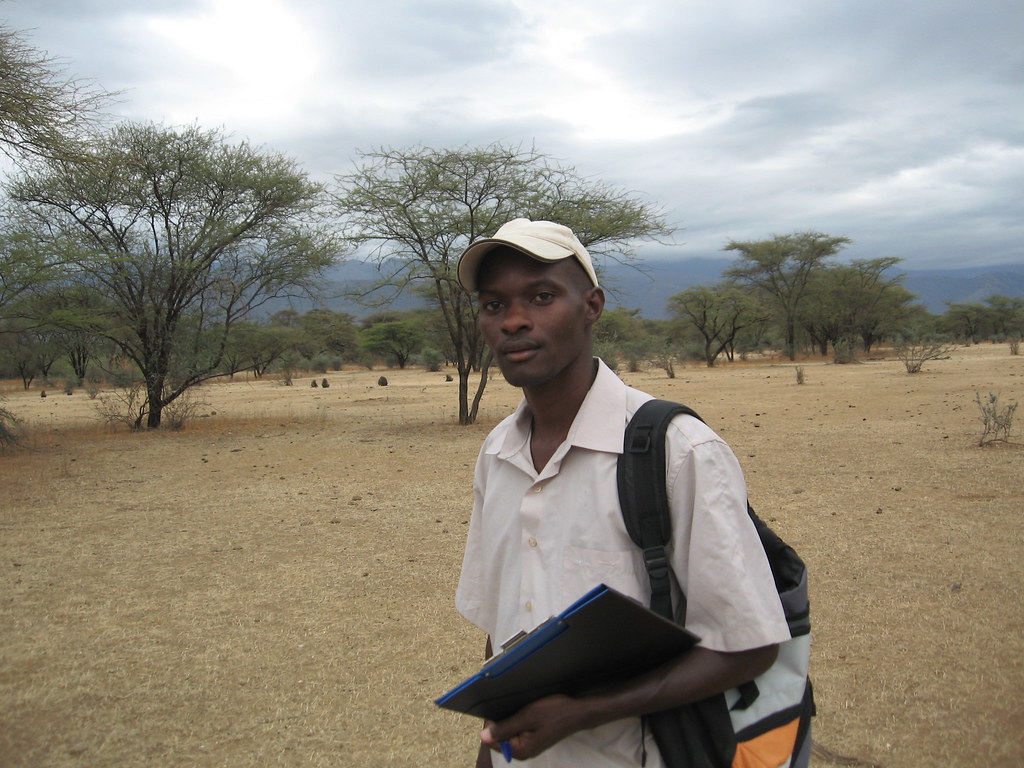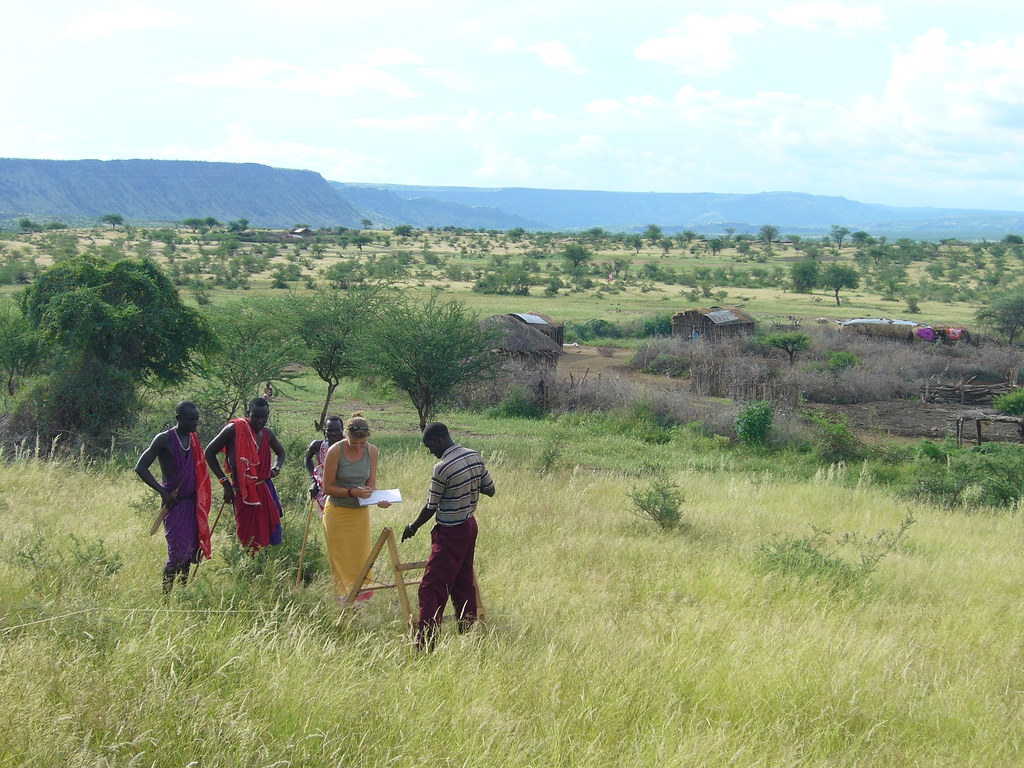 This student volunteered to be the lion to show the rest of the group how the lion collars work and how we use the radio and antenna to track the radio collared lions.
This student volunteered to be the lion to show the rest of the group how the lion collars work and how we use the radio and antenna to track the radio collared lions. This is the group of students and their teacher listening to Dave Christianson talk about the carnivore research project.
This is the group of students and their teacher listening to Dave Christianson talk about the carnivore research project. Wildlife Club members with Dave Christianson and Joel Njonjo. One of the students is pounding in the post that held the motion-sensing camera that was set up inside the school grounds.
Wildlife Club members with Dave Christianson and Joel Njonjo. One of the students is pounding in the post that held the motion-sensing camera that was set up inside the school grounds. Although the Resource Center is still under construction, we have started bringing school groups here so that they can see the buildings and understand the purpose of the Center and our research. The first group to visit was comprised of a teacher and thirteen Form 4 students (last year of secondary school) from Patterson Memorial Secondary School in Olkiramatian. The students were all members of the Wildlife Club at the school and were thrilled to see the buildings and to have the opportunity to learn about some of the projects taking place at the Center. The students learned about the carnivore research project and about some of the local wildlife in the area, asking thoughtful questions all along the way. They made their excitement and appreciation abundantly clear. We have been visiting the Wildlife Club every Thursday now for three weeks and look forward to continuing our visits to their school as well as bringing the rest of the Wildlife Club to the Center in the next few months.
One of the projects we have begun with the wildlife club involves the motion-sensing cameras that are used in the carnivore research project. On October 7th, we met with the club and explained how the cameras work and how they can be used to study wildlife. We discussed what types of data we could collect if they were set up on their school campus and what sorts of questions we could answer. The students then selected two sites (after much deliberation and discussion), one within the school grounds and one just outside the fence. They ultimately decided to set up the one inside the fence near a water source and the one outside the fence on a game trail with the idea that those places would be the most likely places where wildlife would congregate. After the two cameras were set up, the students made predictions about the types of pictures the two cameras would take. For example, some of their predictions include: that they will get more pictures on the camera outside the fence, that the camera inside the fence will probably take pictures of smaller animals, and that they will not get a picture of an elephant. The cameras will be deployed at those locations for at least a few weeks and then we will revisit the cameras and show the students what types of pictures they took. We are all anxious to see the results!








